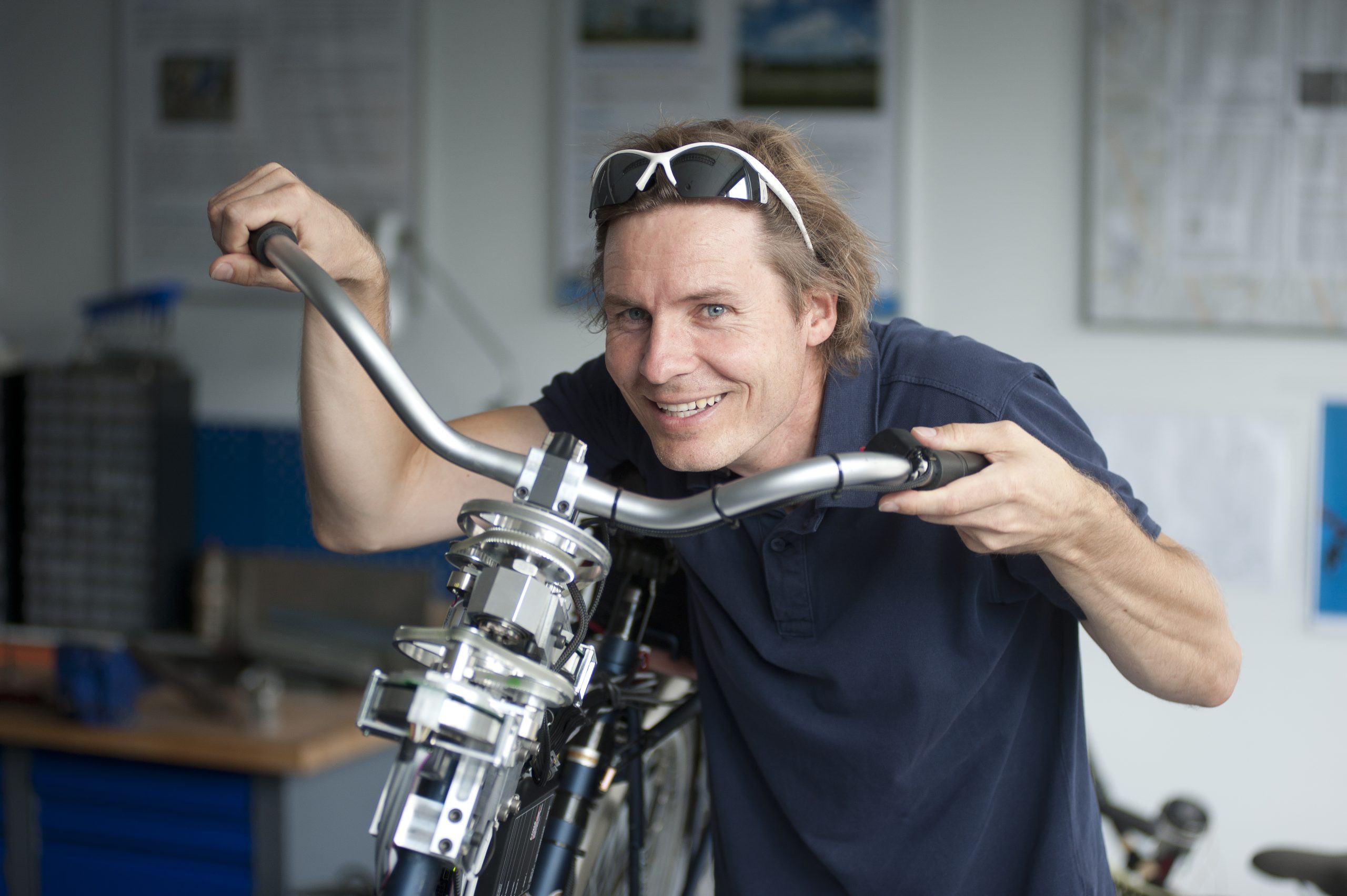The humble bicycle itself has been mathematically modelled, but how about the 160-pounds of meat balancing on top of it? PhD researcher Jodi Kooijman made a first attempt to model the cyclist.
“Just cycle as you normally do,” the two test riders were told as they were presented with a Batavus city bike equipped with angular rate gyros, potentiometers, computer on the back, and a video camera on a stick looking them in the face. They had to cycle various routes around Delft where wind, rain, chasing dogs and irregular paving contributed to lively but hard to replicate observations.
Later, more controlled runs were recorded on a treadmill with three similar cyclists trying to balance the bicycle under varying circumstances (pedalling, no pedalling, no hands on the bars) in about 90 runs in total.
Some observations emerged universally: riders use steering to balance the bicycle; the upper body movement is linked to the pedaling motion (and stops when pedaling stops); at low speeds steering motions increase as the stability drops off. At very low speeds another stabilizing effort kicks in: instead of moving the upper body, the cyclist starts moving his/her knees sideward as a last attempt to stay upright.
Kooijman noticed cyclists move differently according to their posture. One extreme is the forward leaning pose of racing cyclists with stretched arms resting on the low handlebars. In steering , the complete upper-body rotates. The other extreme is the upright pose associated with classic city bikes (‘omafietsen’), with the arms bent at the elbows. For steering, the rider moves only the arms, but the upper body remains still.
Counter to intuition perhaps, of these two cycle types, the racing bicycle is the most stable one. This means that at low speeds the racing cycle needs less steering action to remain upright. A bicycle is regarded as stable when rolling along – above a certain minimum speed – it regains the upright straight ahead orientation after perturbation. To find out, shove your bicycle when its travelling at about 15 km/hr, then kick it from the side and see what happens. If it crashes into the verge, the bike has failed the stability test. If it ‘steers into the fall’ and veers up again it is stable.
Mechanical engineers have developed a satisfying mathematical model of bicycles, which captures the mechanical behaviour in sets of equations and some 25 parameters. But the ensemble of rider and bike is a scientific blank. For instance, it seems that the stability of a bicycle itself does not have that much influence on the stability of the ridden bicycle (bike plus rider). It may be the rider has to steer more actively on a less stable bike, but he/she doesn’t mind (or even notice) doing so. Only seriously instable bicycles start to feel ‘uncomfortable’.
Mind you, there is no lack of mathematical models describing a control model for the (motor) cyclist. Kooijman estimates there are about 80 variations in use, mainly in simulator software. But none of them has been scientifically validated. And that’s where his research has ‘scratched the surface’.
Instead of tinkering with formulas, Kooijman has chosen to observe cyclists in action first, record their every motion and thus gather data which can be used to check models against. Acquisition of these data is a unique accomplishment which has been facilitated by the latest sensors and sampling techniques.
Kooijman recommends that his successors perform experiments to find out if any of the existing models accurately describe what cyclists actually do. “We’re probably doing something quite simple,” he ventures.
→ Jodi Kooijman, Bicycle Rider Control, Observations, Modelling & Experiments, PhD supervisors Prof. D.J. Rixen and Dr. Arend Schwab, Aula, 18 September 2012, 15:00



Comments are closed.